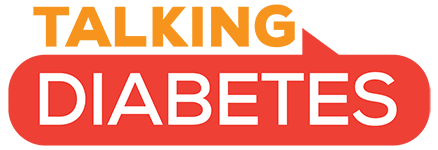How People with Type 2 Diabetes May Benefit from Afternoon Exercise
- Researchers are reporting that people with type 2 diabetes may reap more benefits by exercising in the afternoon.
- In a new study, the researchers reported that participants who exercised later in the day achieved better results in terms of blood glucose levels.
- They said they aren’t sure yet why afternoon exercise may be more beneficial, but it may be because of better sleep patterns and healthier eating habits.
Doctors have long extolled the benefits of exercise to help people with type 2 diabetes (T2D) manage the chronic disease and reduce their risk of health complications.
Now, a new study published in the journal Diabetes Care suggests that what time of day those with type 2 diabetes exercise helps determine just how much it benefits them.
In the study, researchers reported that exercising in the afternoon provided the most dramatic results in controlling blood glucose levels.
“These are very exciting findings because we’ve known that physical activity is beneficial, but what our study adds is a new understanding that timing of activity may be important too,” Jingyi Qian, PhD, a study co-author and a professor of medicine at Harvard Medical School’s Massachusetts’ Brigham and Women’s Hospital in Boston, told Medical News Today.
Studying the effects of exercise on type 2 diabetes
A team of researchers, including some from Brigham and Harvard’s Joslin Diabetes Center, analyzed physical activity data at one year and four years among 2,400 people who were classified as overweight and had been diagnosed with type 2 diabetes.
Each of the participants wore a device that measured physical activity.
The participants had been part of the Look AHEAD (Action for Health in Diabetes) studyTrusted Source, a multi-site, randomized clinical investigation that began in 2001 and monitored the health of more than 5,000 individuals with type 2 diabetes and were classified as overweight or obese.
The researchers determined that those who engaged in moderate (i.e., brisk walking or dancing) to vigorous (i.e., running or fast cycling) physical activity in the afternoon had the greatest reduction in blood glucose levels after one year. Afternoon exercisers also had the highest odds of stopping their glucose-monitoring diabetes medications.
Three years later, the researchers said, those who maintained a regular afternoon workout regimen maintained a reduction in blood glucose levels.
Why afternoon exercise might work better
Precisely why afternoon exercise brought the greatest reductions in blood glucose was unclear.
However, the research team suggested sleep patterns, diet, and metabolism may provide clues.
Dr. Qian said she hopes further research would measure such factors to determine a more direct link.
That, she said, could provide those with type 2 diabetes and physicians more evidence to prescribe exercise at specific times of day to reduce blood glucose levels.
Type 2 diabetes is the most common type of diabetes. It occurs when the body becomes resistant to insulin or doesn’t make enough insulin.
Some cautions about the conclusions
Dr. Mitchell Lazar, a physician at the University of Penn Health System in Pennsylvania, cautioned that the new study failed to demonstrate a concrete cause-effect relationship between the time of day a person with type 2 diabetes exercises and reductions in glucose, or blood sugar, levels.
“It’s premature for physicians to take this to the bank and prescribe afternoon exercise because while the study shows some correlation, it does not demonstrate cause and effect nor take into account other confounding factors,” he told MNT.
Other studies have established links between when people with type 2 diabetes exercise and health risks.
A 2021 study, for example, concluded that morning workouts may raise the risk of heart attack in men with type 2 diabetes.
What to know about type 2 diabetes
Type 2 diabetes occurs when blood sugar levels rise due to issues with how the body uses or produces insulin. Symptoms may include frequent urination, increased thirst, and blurry vision.
It can appear at any age, but it is more likely to occur after the age of 45Trusted Source. It’s estimated that more than 37 million people in the United States have diabetes, mostly type 2, according to the American Diabetes Association.
Insulin is a hormone that regulates the movement of blood glucose, or sugar, into cells, which use it as energy.
When sugar cannot enter cells, too much glucose collects in the blood, and the body cannot use it for energy. That can lead to flu-like fatigue, urinary tract infections, numbness and tingling in the hands, arms, legs, and feet due to circulation and nerve damage.
If blood sugar rises or falls too much, it can quickly lead to medical emergencies, including seizures and loss of consciousness.
Keeping blood glucose within target levels can prevent serious long-term complications, including cardiovascular disease, high blood pressure, nerve damage, eye damage and vision loss, and kidney disease.

